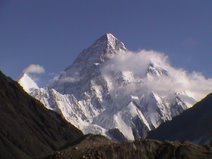
January 09, 2007
DR SYED FAROOQ HASNAT
Ever since James Baker and Lee Hamilton presented their bipartisan report to President Bush, the ongoing debate about Iraq increased manifold. The Iraq Study Group Report encouraged even those, who were hesitant to take definite stance on the Iraq war and to articulate their views in public. Prominent amongst them being, the former chairman of the Joint Chiefs of Staff and Secretary of State, Colin Powell. In an interview with CBS (Face the Nation), Powell opposed Bush administration’s expected plans to increase US troops in Iraq and said that the US government should instead talk directly with Iran and Syria, to stabilise the Middle Eastern region. He was joined by the incoming Chairman of the powerful Senate Foreign Relations Committee, Joseph Biden, who expressed similar views. The senator went on to say that he would oppose President Bush’s plan to accelerate the war in Iraq and would obstruct any effort to increase the already 140,000 troops present in Iraq. No matter how belligerent the Bush administration would like to be in Iraq, it will face a stiff resistance from the Democratic dominated 110 Congress, which is being convened on January 4, 2007.
The American people gave their decision against the continuation of war in Iraq, by defeating the Republican Party in the midterm congressional elections. This change led to a number of questions and options regarding the worsening situation in Iraq. However, the details and the kind of course, which the administration could adopt will be debated in the coming weeks and months. President Bush reacted to the report with caution but indicated that he regarded the findings of the report worth examining. However, his later meetings with the State Department and Pentagon officials indicate that his future course of action would not conform to the recommendations of this report. Although the report was commissioned by the US Congress, but it has no binding on the administration to implement, and it only has an advisory capacity. The strength of the report comes from the fact that all its ten members are persons of high caliber and above all it is bipartisan - half of the 10 members from each side of the political spectrum. The committee was chaired by James Baker, a former Secretary of State under President George H W Bush and Lee Hamilton was the Chairman and the Ranking Member of the House International Relations Committee from early 1970s to 1993. Its members include Supreme Court retired Justice Sandra Day O’Connor; William J Perry, a former Secretary of Defence in the 1990s and now Professor at Stanford University and Lawrence S. Eagleburger, Secretary of State under President George H W Bush.
Different points of view are examined in this report; therefore it is considered by the American public as a consensus, representing all shades of opinion. Part of the report recognises this fact and says that the “US foreign policy is doomed to failure – as is any course of action in Iraq – if it is not supported by a broad, sustained consensus. The aim of our report is to move our country toward such a consensus.” This report in summary recommends that the American troops must come back in the first quarter of 2008. Although, no exact timetable is provided but many see it a kind of a time line which the US government should adopt. President Bush, on the other hand insist that there should be no time table and that the troops should only come back from Iraq, “after the job is done”. The administration can choose to ignore the advised crises management methods, but the report will certainly impact a new kind of pressure on the decision makers. After the recommendations of the report were announced, 70 per cent of the American people favoured military disengagement in Iraq. According to the NBC and Wall Street Journal survey, “seven in 10 say they want the new Congress to pressure the White House to begin bringing troops home within six months.”
In recent weeks, President Bush has been more forthcoming, in putting forward his plan, to increase the number of troops in Iraq by 30,000 to 40,000, for the purpose of taking control of the deteriorating situation. This is not what the report suggests. A veteran of Vietnam War, Congressman John Murtha asks the question that since the “United States has already lost the Iraq war”, therefore “what’s the point in sending another 40,000 troops?” Secondly, Bush administration’s belligerent posture towards Iran in recent Security Council sanctions indicate that his administration is not interested in incorporating regional powers like Iran and Syria, in any peace plan for the region. This attitude is contrary to the recommendations of the report which pleads with the administration to involve these two countries for any meaningful peace in Iraq and even to solve the Palestinian and Lebanese issues.
There is a widespread conviction amongst the Americans that the US forces are not going to achieve victory in Iraq and that the course must be changed, the troops brought back home and that the Bush administration should refrain from any such invasions, in the future. These are supplemented by a feeling that the war in Iraq was mishandled and mismanaged. Right actions were not taken at a right time and that the involvement in Iraq has reduced the American capacity to use its influence, elsewhere. The report in fact reflects the general view of the American public.
President Bush has lowered his criteria of victory and now he speaks about the bringing back of the troops, after “they finish their job” in Iraq. Too many observe this position of President Bush remains open-ended and conveys different meanings to different people. But at the same time he remains adamant that desired results will be achieved and to quote his favourite phrase, “the job will be done.” It is speculated that in the next few weeks he will announce his “new course” for Iraq.
Even if the recommendations of the Iraq Report are accepted, the exit of the American forces can not be sudden – it will be in stages, making certain that there is a façade of peace at least in the city of Baghdad. There will also be a desperate effort to train the Iraqi army and police, at an acceptable level. The Iraq Report also desires that the Iraqi people should be prepared to take over the responsibilities of their country.
There is at least one point of agreement between the report and the Bush administration. Both desire that Iraqi security forces and the political institutions are developed on the premises that they can be on their own, without any external help.
The opponents of the presence of the American troops in Iraq are of the view that it will be possible only, if a time table is forced upon the Iraqi government. They believe that if a time frame is not provided then the Iraqis will continue to rely more and more on the Americans, which in turn would obstruct their genuine efforts, to strength their institutions.
Since there is an indication that the American forces are expected to leave Iraq in 2008, therefore the Iraqis will have to expedite a governing system for their country. Iraq has been battered and destabilised by the shabby invasion and it will take plenty of effort and leadership to mend the damaged society.








